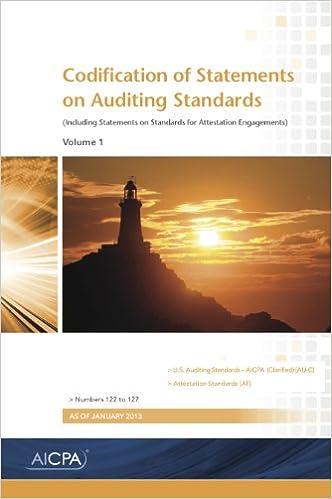Question
9.In statistical sampling for tests of controls, determining the appropriate confidence level and desired precision are decisions made by the auditor that will affect sample
9.In statistical sampling for tests of controls, determining the appropriate confidence level and desired precision are decisions made by the auditor that will affect sample size for the test. Which of the following should TYPICALLY not factor into sample size when performing statistical sampling for test of controls? A. desired sampling risk B. population size C. audit resources available for execution of the sampling plan D. objective of the test E. Both b&c F. Both c&d
10. An auditors tolerable deviation rate is 8% for a given control. The true deviation rate of the control is 15%. After testing the control, the auditor calculates a computed upper deviation rate of 5%. The auditor will most likely: Properly conclude the control is unreliable Improperly conclude the control is reliable Perform additional tests of the control and ultimately discover it is unreliable using professional judgement Increase substantive testing since the control is unreliable
11. A key advantage of statistical sampling over nonstatistical sampling is that statistical sampling helps an auditor to: A. minimize nonsampling risk B. quantify sampling risk C. reduce the level of audit risk D. promote consistency throughout audits of different accounts and different engagements
Answer questions:
6. Your non-for-profit audit client is under intense pressure to not report a profit in the current year. Which of the following assertions for revenues are you most concerned with?
A. Completeness B. Classification C. Occurrence D. Rights and Obligations
7. Which of the following statements is FALSE?
A. When testing a given account, an auditor may need to collect a greater quantity of audit evidence for some assertions (e.g. existence) than for other assertions (e.g. completeness).
B. When investigating significant differences found during preliminary analytical procedures, inquiry alone is generally sufficient to satisfy the auditors requirements.
C. All of the auditors workpapers will contain clear documentation of each member of the audit team who worked on or reviewed the workpaper and the date on which that review was conducted.
D. Copies of important multi-year contracts with suppliers and customers are more likely to be found in an auditors Current File workpapers rather than their Permanent File workpapers.
8. Which of the following is TRUE regarding the tradeoff between test of controls and substantive testing? (For purposes of answering this question, assume the public company referenced in the answer choices is an accelerated filer.)
I. During a private company audit, it is possible for the auditor to follow a substantive approach and gain no audit evidence from test of controls during the course of the audit.
II. During a private company audit, it is possible for the auditor to follow a reliance approach and gain no audit evidence from substantive testing during the course of the audit.
III. During a public company audit, it is possible for the auditor to follow a substantive approach and gain no audit evidence from test of controls during the course of the audit.
IV. During a public company audit, it is possible for the auditor to follow a reliance approach and gain no audit evidence from substantive testing during the course of the audit.
A. Both I & II B. Both I & III C. I only D. Both II & IV E. II only
Step by Step Solution
There are 3 Steps involved in it
Step: 1

Get Instant Access to Expert-Tailored Solutions
See step-by-step solutions with expert insights and AI powered tools for academic success
Step: 2

Step: 3

Ace Your Homework with AI
Get the answers you need in no time with our AI-driven, step-by-step assistance
Get Started


